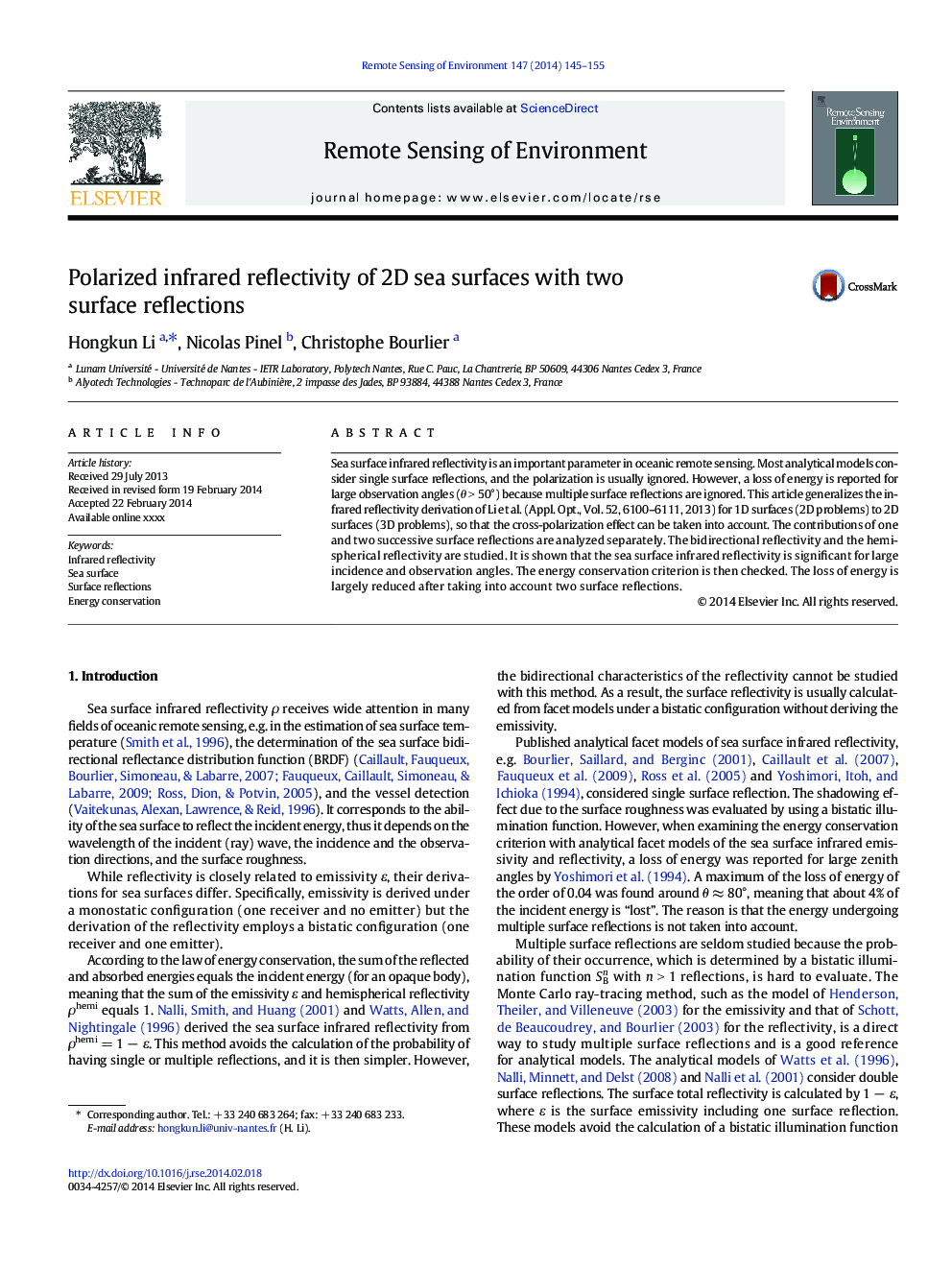| Article ID | Journal | Published Year | Pages | File Type |
|---|---|---|---|---|
| 6346729 | Remote Sensing of Environment | 2014 | 11 Pages |
Abstract
Sea surface infrared reflectivity is an important parameter in oceanic remote sensing. Most analytical models consider single surface reflections, and the polarization is usually ignored. However, a loss of energy is reported for large observation angles (θ > 50°) because multiple surface reflections are ignored. This article generalizes the infrared reflectivity derivation of Li et al. (Appl. Opt., Vol. 52, 6100-6111, 2013) for 1D surfaces (2D problems) to 2D surfaces (3D problems), so that the cross-polarization effect can be taken into account. The contributions of one and two successive surface reflections are analyzed separately. The bidirectional reflectivity and the hemispherical reflectivity are studied. It is shown that the sea surface infrared reflectivity is significant for large incidence and observation angles. The energy conservation criterion is then checked. The loss of energy is largely reduced after taking into account two surface reflections.
Related Topics
Physical Sciences and Engineering
Earth and Planetary Sciences
Computers in Earth Sciences
Authors
Hongkun Li, Nicolas Pinel, Christophe Bourlier,
